In my June 2 post about restoring our Santa Fe yard with native plants, about ten days had passed since sowing a dozen pounds of grass and wildflower seed, and the first tiny sprouts were beginning to appear.
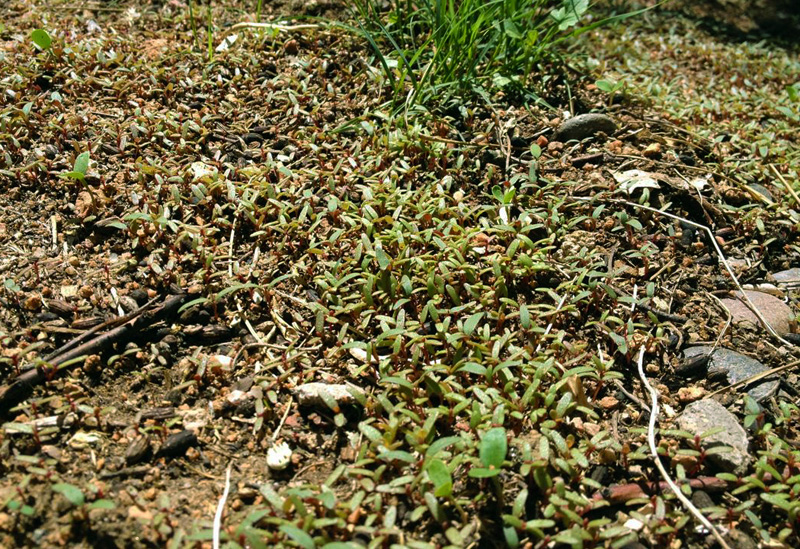 Those first shoots, alas, were nothing I had planted; they were purslane (Portulaca oleracea). Purslane is an amazing grow-anywhere plant, a succulent brought by Europeans to provide salad greens in wintertime (it dries nicely). When it grew bigger I sampled it—what a great taste! Slightly salty, with a definitely satisfying crunch. And more omega-3 fatty acids than any other leafy vegetable. Any!
Those first shoots, alas, were nothing I had planted; they were purslane (Portulaca oleracea). Purslane is an amazing grow-anywhere plant, a succulent brought by Europeans to provide salad greens in wintertime (it dries nicely). When it grew bigger I sampled it—what a great taste! Slightly salty, with a definitely satisfying crunch. And more omega-3 fatty acids than any other leafy vegetable. Any!
I didn’t want my yard covered in purslane, but yards have their own ideas, so purslane took over. Millions of sprouts. Later I was grateful for the ground cover—holding down the dust through a dry June. Purslane knows its job. The native grasses, blue grama and buffalograss, are warm-season grasses, which means that in this cool-ish spring they waited a long time, until mid-June, for the soil to get toasty before they germinated. When they did sprout, they had to pick their way skyward through purslane.
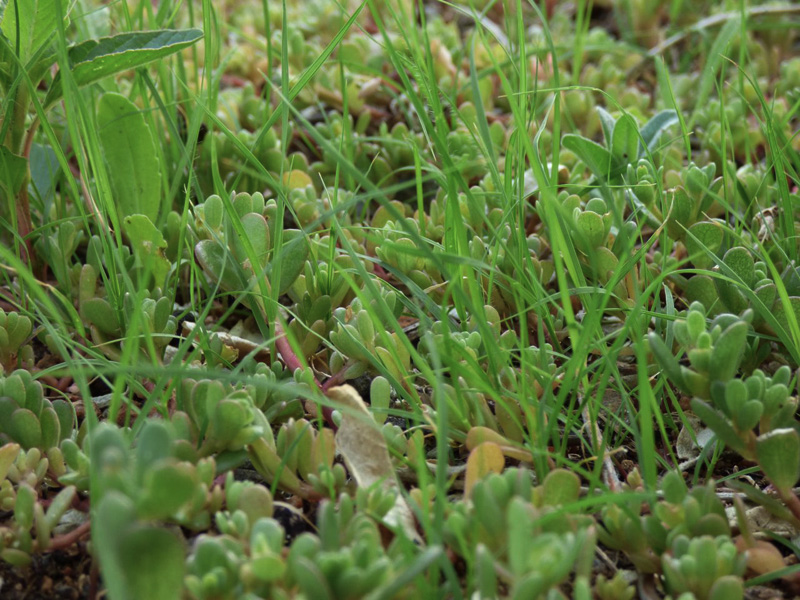 Native grasses can hold their own, so I held off weeding.
Native grasses can hold their own, so I held off weeding.
By the end of June, after watering twice a day for three weeks then once a day after that, I could see honest-to-goodness patches of grass where before there had been none.
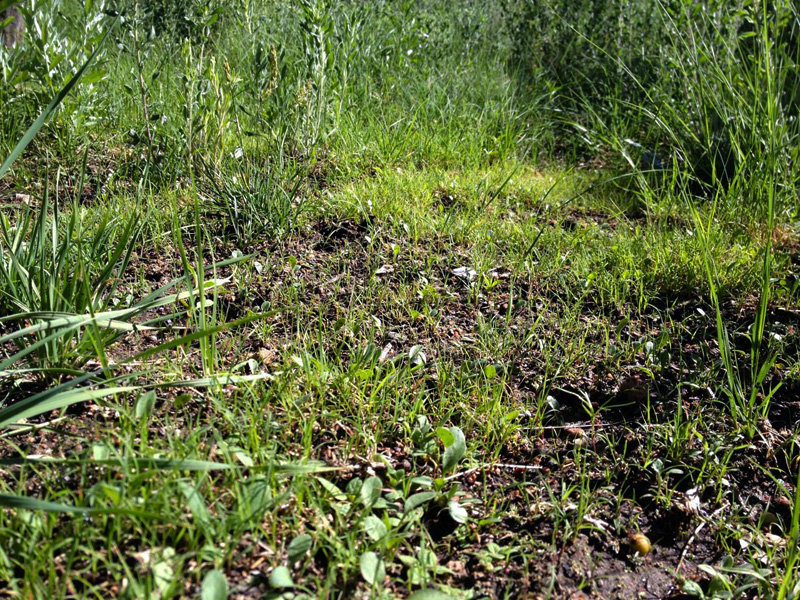 In July the yard suddenly went crazy, thanks to the returning monsoons—an almost-daily afternoon or evening thundershower. Rain in the desert! Here’s the same patch just two weeks later, around mid-July:
In July the yard suddenly went crazy, thanks to the returning monsoons—an almost-daily afternoon or evening thundershower. Rain in the desert! Here’s the same patch just two weeks later, around mid-July:
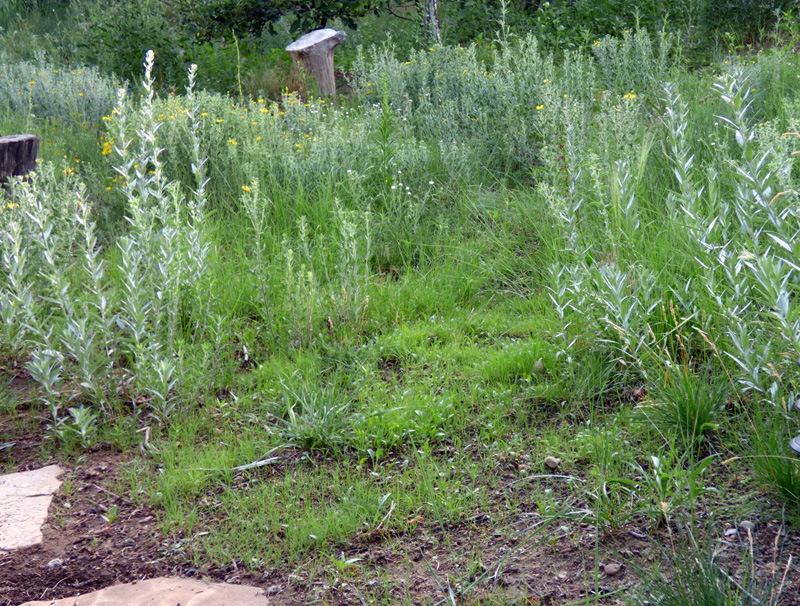 Rainwater truly is better for your yard, and a big reason is that it is not chlorinated. Chlorinated tap water kills the microbes in the soil for 24–48 hours after watering, and it possibly also disturbs the balance of beneficial microbes in the human gut.
Rainwater truly is better for your yard, and a big reason is that it is not chlorinated. Chlorinated tap water kills the microbes in the soil for 24–48 hours after watering, and it possibly also disturbs the balance of beneficial microbes in the human gut.
With all the fresh rain, the yard bloomed with native wildflowers—some I’d planted in May, others longtime residents. Mexican hat (Ratibida columnifera) at dawn:
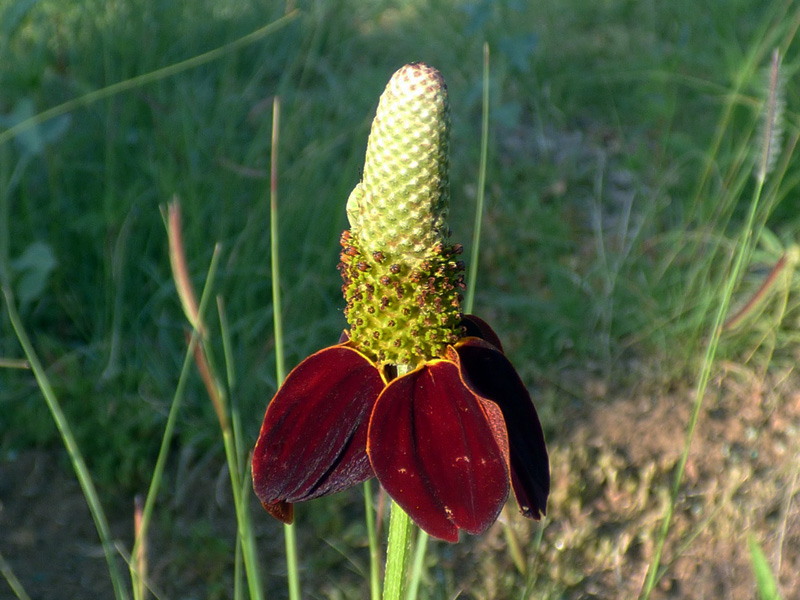 Chocolate flower (Berlandiera lyrata), whose foliage is said to be tinged with the scent of chocolate, though I’ve not been able to smell it:
Chocolate flower (Berlandiera lyrata), whose foliage is said to be tinged with the scent of chocolate, though I’ve not been able to smell it:
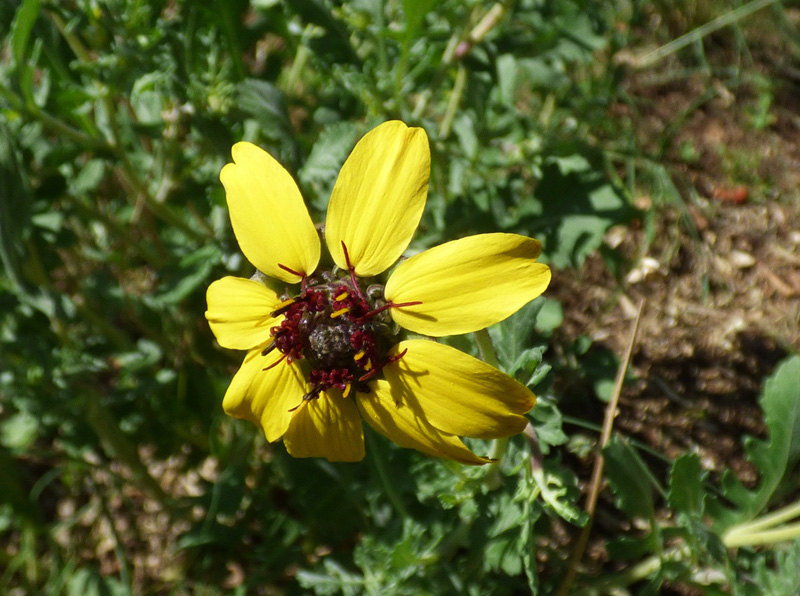 Chocolate flower is pretty even after blooming, for it shapes its seed heads into rosettes:
Chocolate flower is pretty even after blooming, for it shapes its seed heads into rosettes:
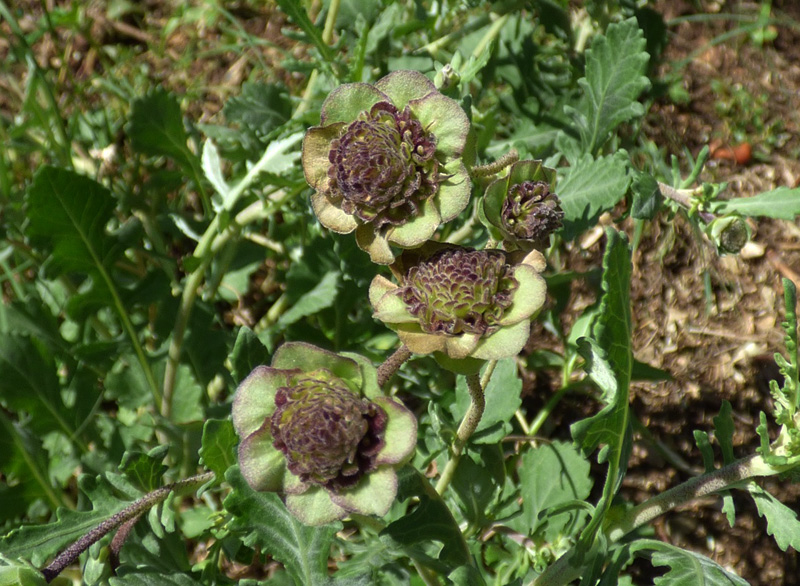 And of course the penstemon—perhaps the most prized native flower in Santa Fe, large and ubiquitous and many shaded from purple to red and orange, glowing in the most arid soil along walls and fences from April through July. Here, in a moist spot in our yard, is a purple variety:
And of course the penstemon—perhaps the most prized native flower in Santa Fe, large and ubiquitous and many shaded from purple to red and orange, glowing in the most arid soil along walls and fences from April through July. Here, in a moist spot in our yard, is a purple variety:
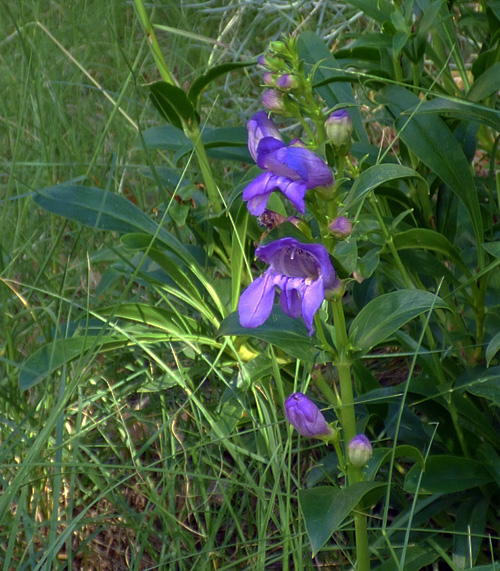 And a tiny mystery flower, which I’ve not yet had time to identify—small as a fingernail:
And a tiny mystery flower, which I’ve not yet had time to identify—small as a fingernail:
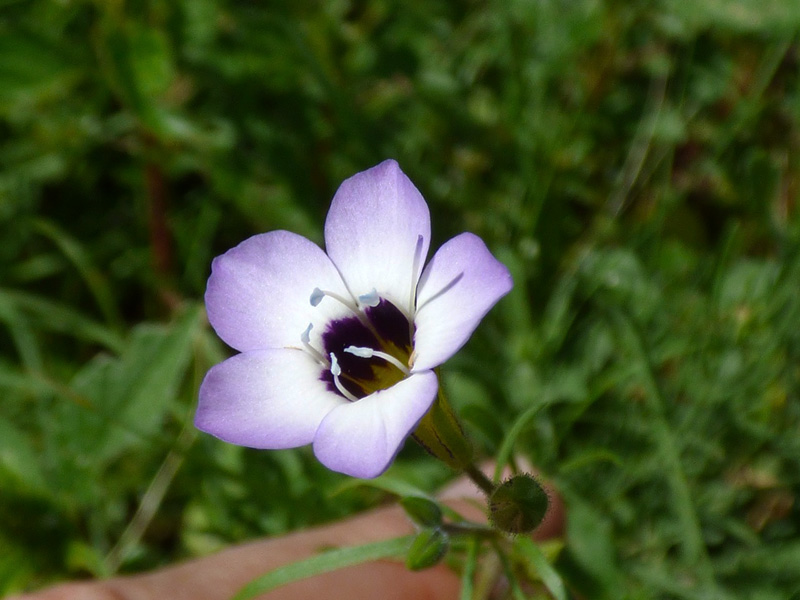 Around mid-July the blue grama suddenly began to flower, its feathery seeds glistening. The mnemonic for blue grama is “gramma’s eyelash,” for obvious reasons:
Around mid-July the blue grama suddenly began to flower, its feathery seeds glistening. The mnemonic for blue grama is “gramma’s eyelash,” for obvious reasons:
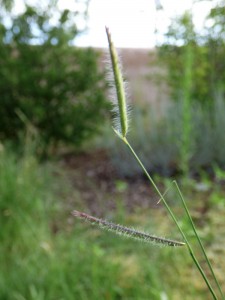 Every morning blue grama seed heads glistened in the golden light of dawn—a magical sight that I enjoyed afresh each day but couldn’t quite capture in a photo. How to convey the feeling of a mass of florescences twinkling in the breeze? For days I spent an hour each morning with my belly in the dirt, trying every possible angle. Getting up close helped me get to know blue grama, and finally the photos began to come alive:
Every morning blue grama seed heads glistened in the golden light of dawn—a magical sight that I enjoyed afresh each day but couldn’t quite capture in a photo. How to convey the feeling of a mass of florescences twinkling in the breeze? For days I spent an hour each morning with my belly in the dirt, trying every possible angle. Getting up close helped me get to know blue grama, and finally the photos began to come alive:
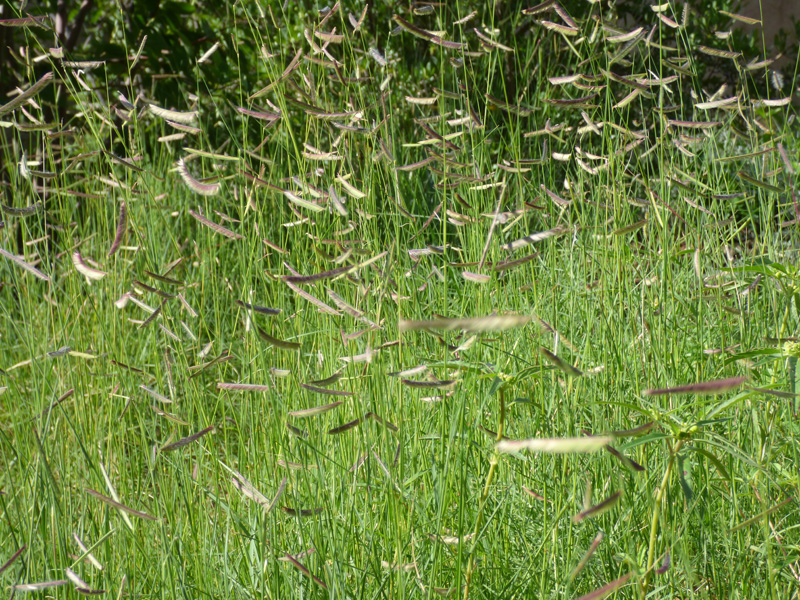 We also have a few bunches of Indian ricegrass (Oryzopsis hymenoides). The Indians, I am told, gathered these minuscule seeds and processed them into food:
We also have a few bunches of Indian ricegrass (Oryzopsis hymenoides). The Indians, I am told, gathered these minuscule seeds and processed them into food:
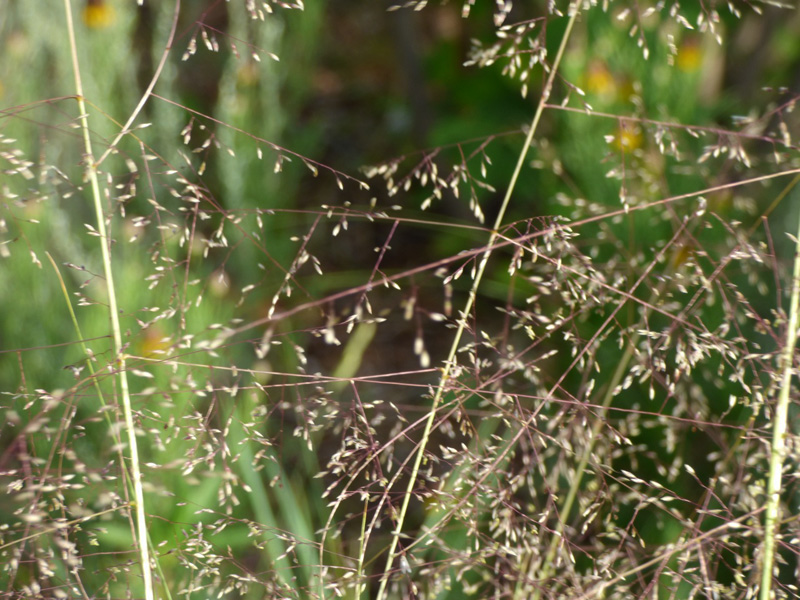 By later July the garden had turned into a riot of golden hairy asters (Chrysopsis villosa) and yellow prairie coneflowers (Ratibida columnifera) and Mexican hats and blue grama:
By later July the garden had turned into a riot of golden hairy asters (Chrysopsis villosa) and yellow prairie coneflowers (Ratibida columnifera) and Mexican hats and blue grama:
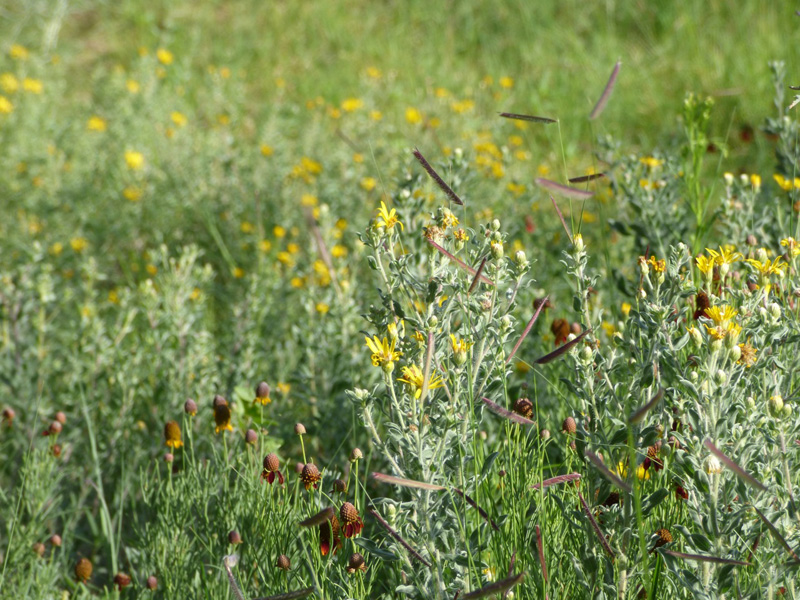 Grass even sprouted at last under the juniper tree, where there had been bare soil for several years. Here was the morning view out the window from my workstation during July:
Grass even sprouted at last under the juniper tree, where there had been bare soil for several years. Here was the morning view out the window from my workstation during July:
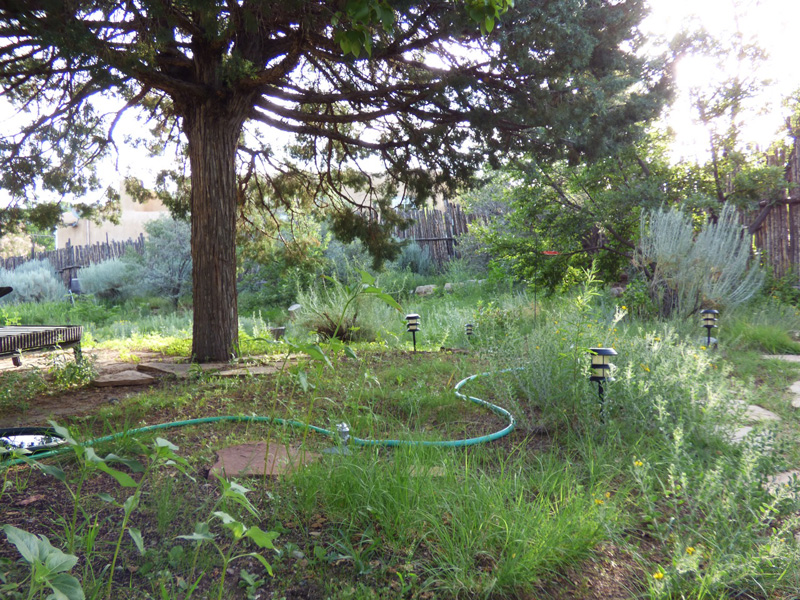 One corner of the yard is devoted to nonnative, showy flowers on drip irrigation, and in July the flower garden went wild:
One corner of the yard is devoted to nonnative, showy flowers on drip irrigation, and in July the flower garden went wild:
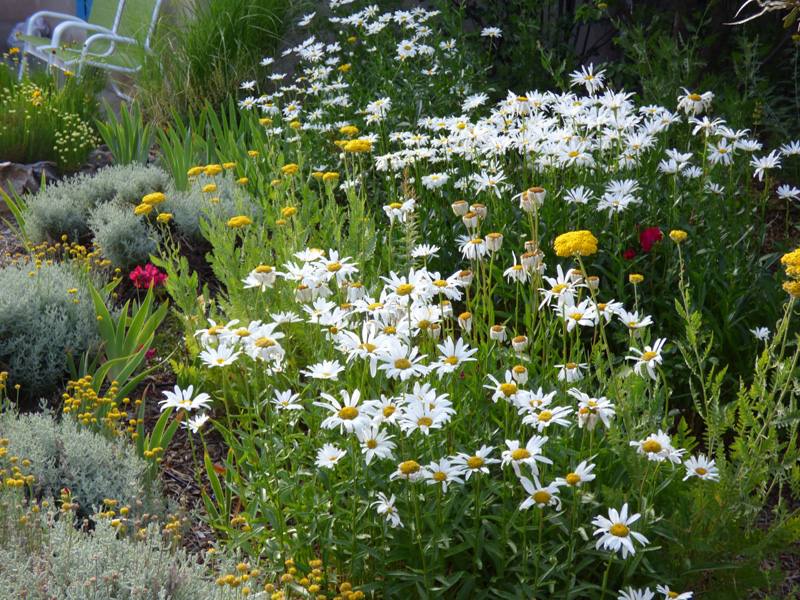 A special joy of living in Santa Fe is getting to know the desert rose, apache plume (Fallugia). It’s a large gangly shrub of the rose family, with white flowers that look like wild roses. When it goes to seed, each flower produces a feathery plume, and July brought out the plumes:
A special joy of living in Santa Fe is getting to know the desert rose, apache plume (Fallugia). It’s a large gangly shrub of the rose family, with white flowers that look like wild roses. When it goes to seed, each flower produces a feathery plume, and July brought out the plumes:
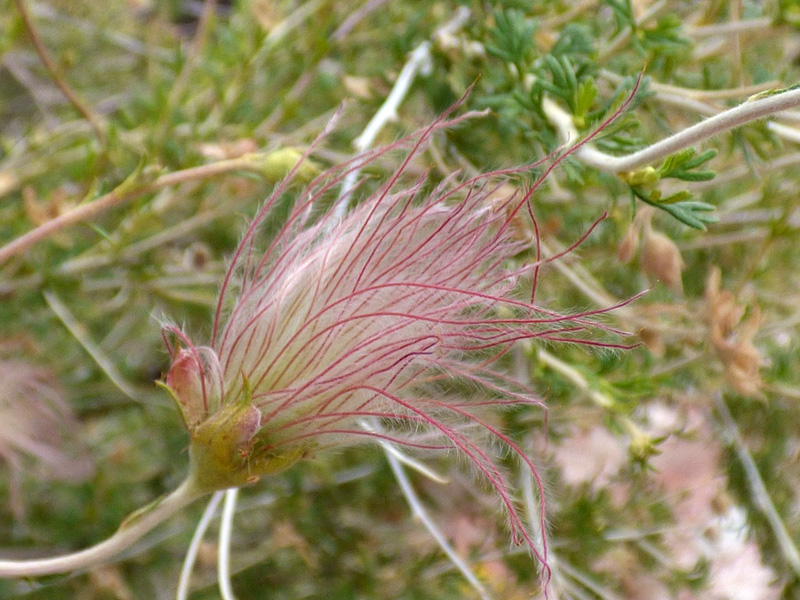 Another special joy is the blue mist spirea (Caryopteris x clandonensis) just outside our gate, a chorus of bees humming in it:
Another special joy is the blue mist spirea (Caryopteris x clandonensis) just outside our gate, a chorus of bees humming in it:
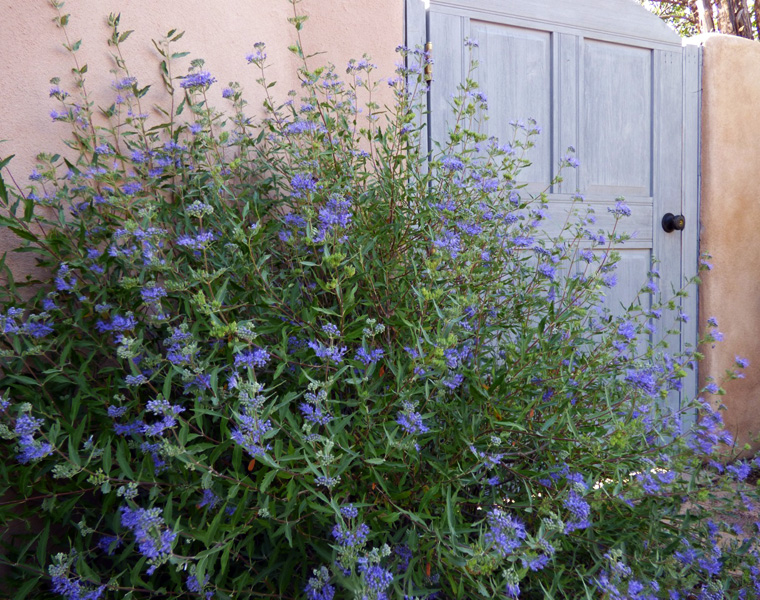 The birds love our yard, so mornings often find me sitting quietly in the garden keeping track of visitors. In July I could typically spot 18 to 20 species in an hour or so. Bullock’s orioles were frequent visitors, busy grabbing food for their new fledglings. One morning a male oriole perched briefly atop a Russian olive tree, chattering noisily, before taking off for the grape jelly feeder:
The birds love our yard, so mornings often find me sitting quietly in the garden keeping track of visitors. In July I could typically spot 18 to 20 species in an hour or so. Bullock’s orioles were frequent visitors, busy grabbing food for their new fledglings. One morning a male oriole perched briefly atop a Russian olive tree, chattering noisily, before taking off for the grape jelly feeder:
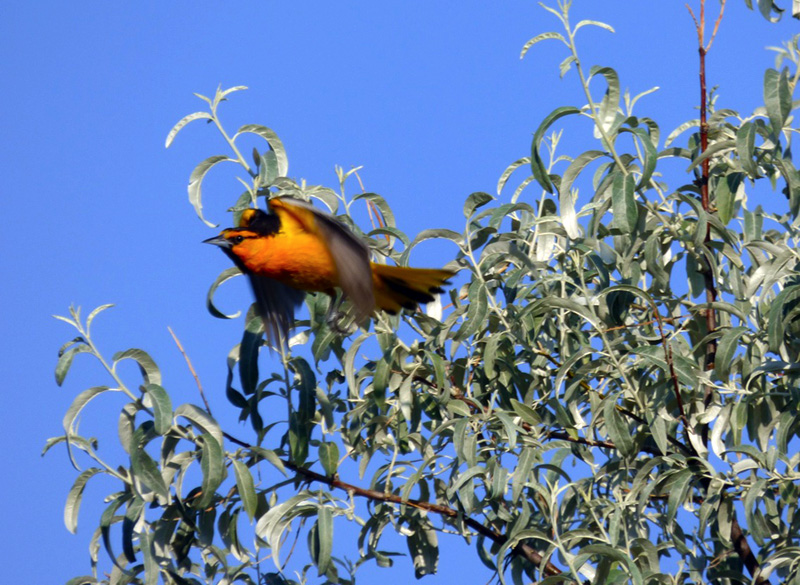 Followed a few seconds later by his mate:
Followed a few seconds later by his mate:
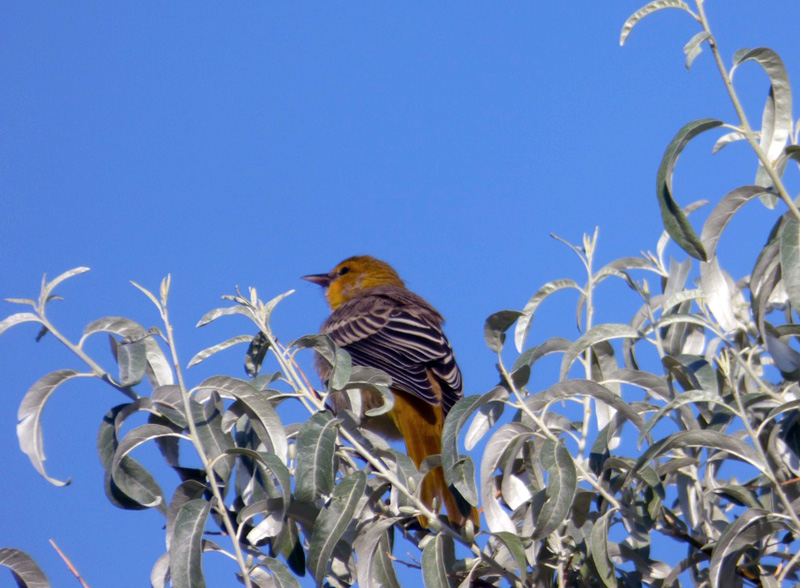 One afternoon I heard a ruckus of chattering orioles and other chirping, angry birds and went out into the yard to find a Cooper’s hawk perched on our fence:
One afternoon I heard a ruckus of chattering orioles and other chirping, angry birds and went out into the yard to find a Cooper’s hawk perched on our fence:
 August has brought out the plains coreopsis (Coreopsis tinctoria):
August has brought out the plains coreopsis (Coreopsis tinctoria):
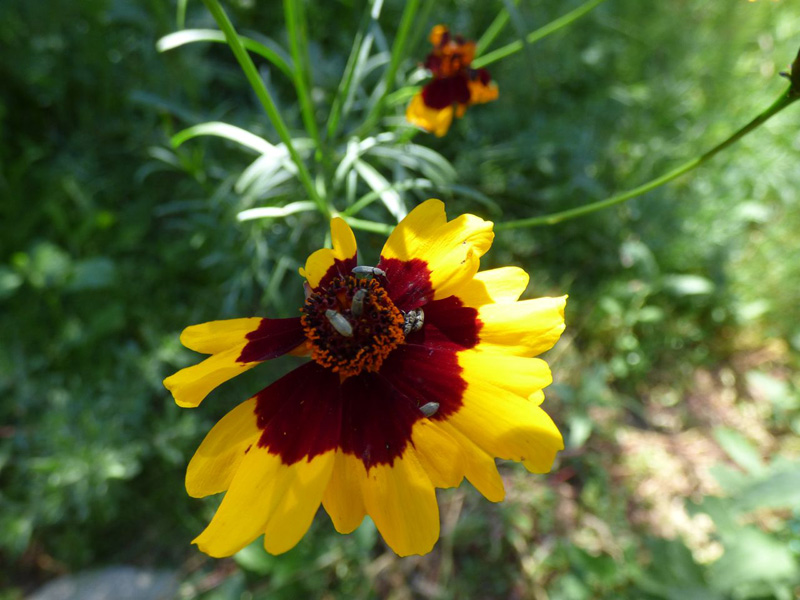 We said good-bye to the orioles last week—they’re the first to head south, just as soon as the juveniles can feed themselves—but have said hello to the purple flowers of late summer: the purple asters, which around here grow on bushy plants taller than your knees. They look so weedy that I made the mistake of pulling out one or two of these bushes in July:
We said good-bye to the orioles last week—they’re the first to head south, just as soon as the juveniles can feed themselves—but have said hello to the purple flowers of late summer: the purple asters, which around here grow on bushy plants taller than your knees. They look so weedy that I made the mistake of pulling out one or two of these bushes in July:
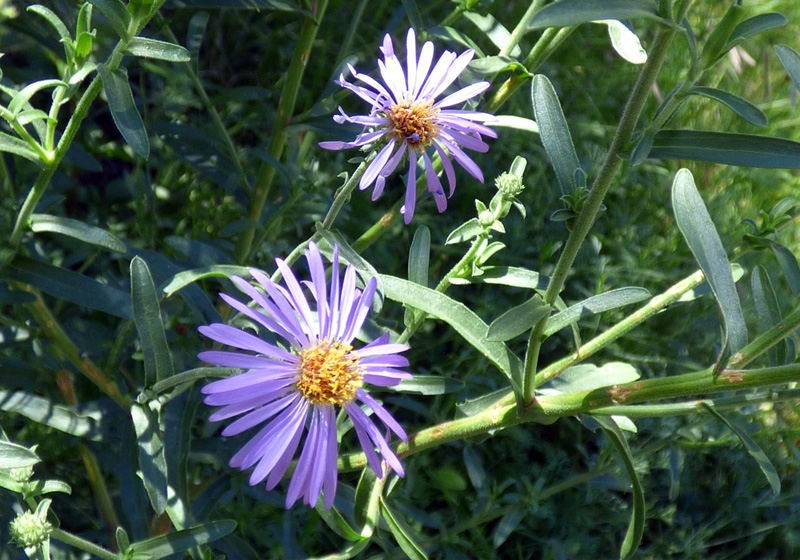 And a special treat was our glimpse last week of a snake hanging out under the recycle bins. I believe it’s a garter snake, about two feet long with a body as thick as a man’s thumb:
And a special treat was our glimpse last week of a snake hanging out under the recycle bins. I believe it’s a garter snake, about two feet long with a body as thick as a man’s thumb:
 What would a view of the yard be without my constant companion, Bodhi the Chief Yard Patrol and Squirrel Chaser? He hates the camera, so when he saw me fiddling with it he turned his face studiously away.
What would a view of the yard be without my constant companion, Bodhi the Chief Yard Patrol and Squirrel Chaser? He hates the camera, so when he saw me fiddling with it he turned his face studiously away.
 The restored yard is at its peak right now. I reseeded a few still-bare spots in July, and when the rains quit for a week I had to resume watering those new seeds, but most of the time the yard is on its own, and all I am doing is watching. And enjoying. Here are a few photos from the past few days. First, the same patch of new grass as in photos above:
The restored yard is at its peak right now. I reseeded a few still-bare spots in July, and when the rains quit for a week I had to resume watering those new seeds, but most of the time the yard is on its own, and all I am doing is watching. And enjoying. Here are a few photos from the past few days. First, the same patch of new grass as in photos above:
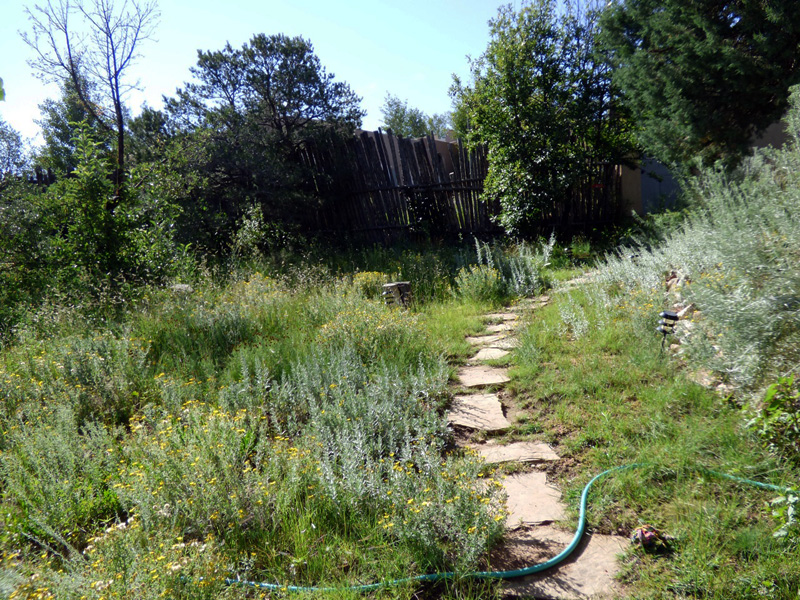 Looking east, toward Picacho Peak at the edge of town (a four-mile round-trip hike with 1500 ft elevation gain; I did the hike just a few days ago):
Looking east, toward Picacho Peak at the edge of town (a four-mile round-trip hike with 1500 ft elevation gain; I did the hike just a few days ago):
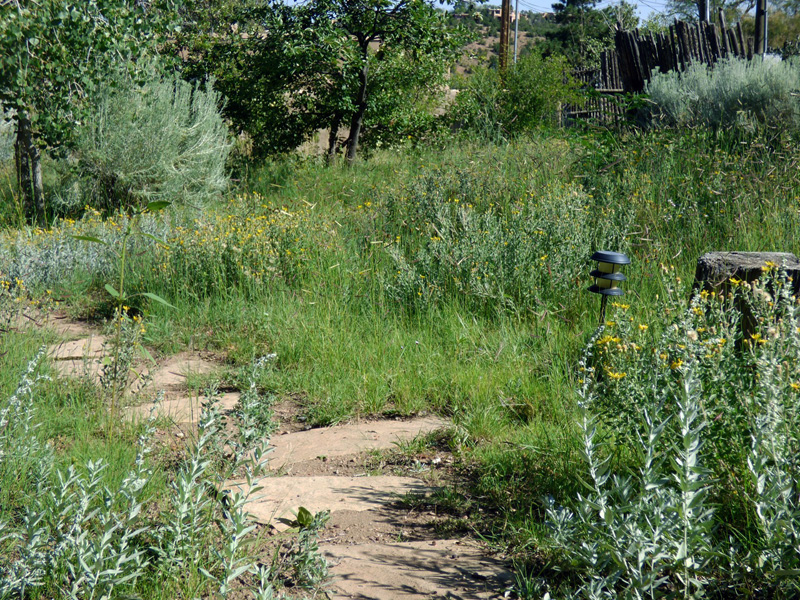
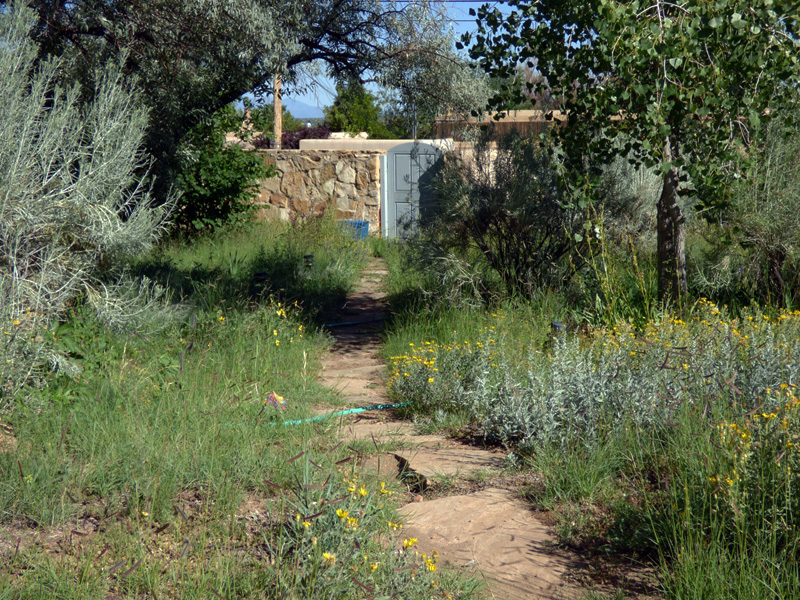
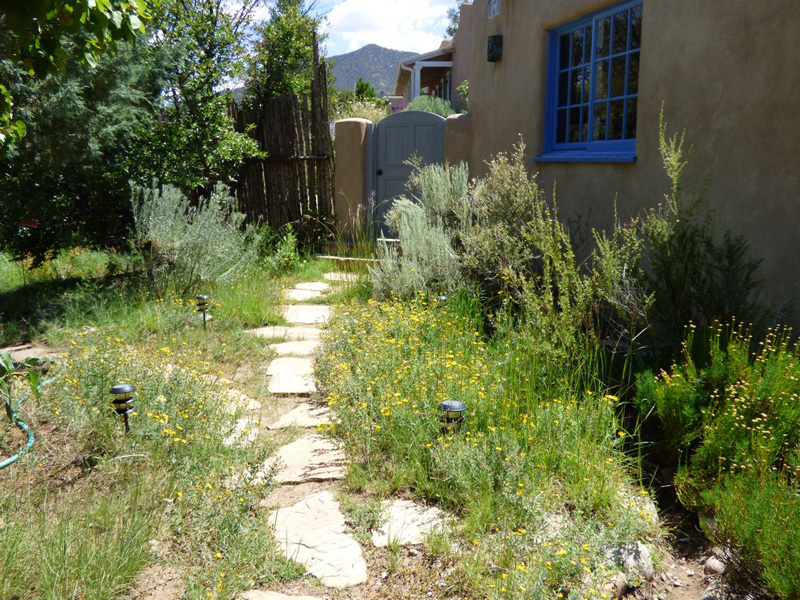
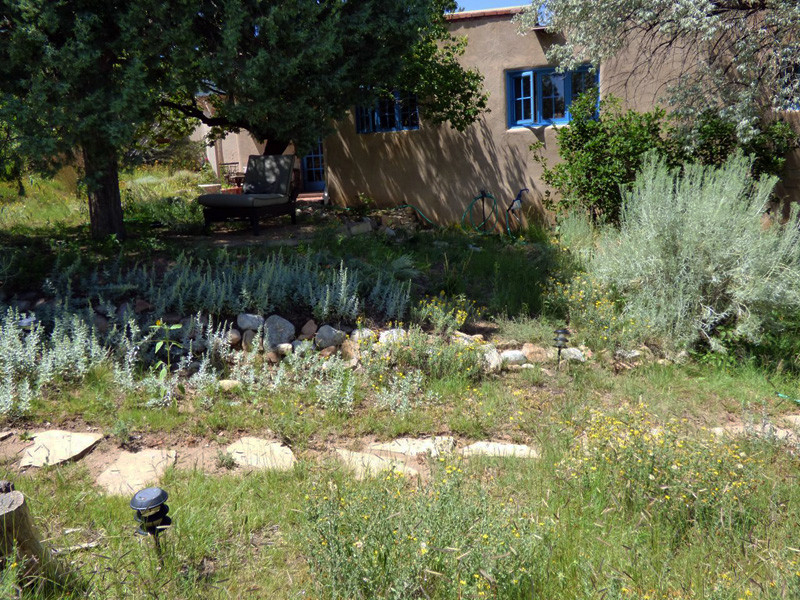
What a lovely garden. I’m very impressed!
Thanks, Dave! You know I learned my love of high-plateau native plants from you. Pulling cheatgrass last spring, I kept remembering our success with the wildflower meadow up on Flagstaff in Boulder and hearing your voice: “Cheatgrass is an annual, so if you get it this year, before it drops its seeds, it’s gone!” You were right about the Flagstaff meadow, so I figured it would work here too. Blue grama & buffalograss: it’s the way to go in arid climates!